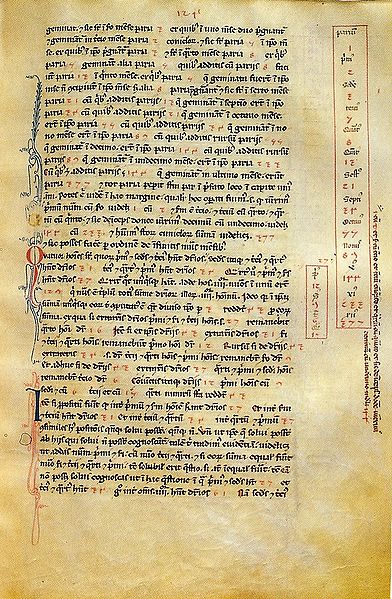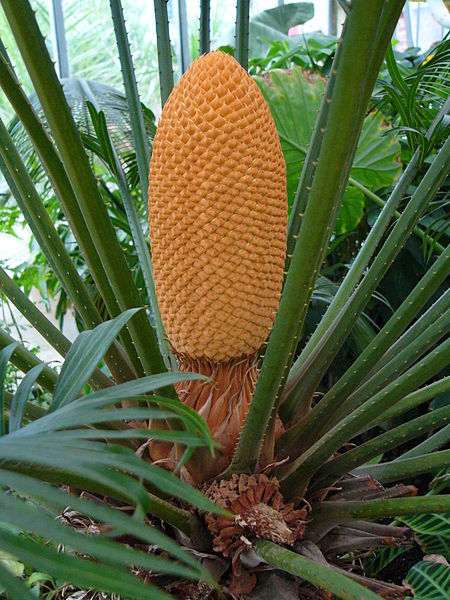Who was Fibonacci and what was the number series named after him?
Reported by Chris Edwards
They say that “it is never too late to learn something new”. On Thursday, 11 October 2012 Giorgio Cambie, a senior member of the Rotary Club of London Centenary living in Northern Italy, gave an illustrated presentation on Fibonacci and the number series named after him. Members were fascinated by what Giorgio had to tell them. After the meeting some members googled “Fibonacci” in an effort to learn more about him and his influence on mathematics in Europe.
It has been claimed that the man now known as Fibonacci was the "greatest European mathema-tician of the middle ages". The man’s full name was Leonardo of Pisa, or Leonardo Pisano in Italian. He was born in about 1175 in Pisa, a Tuscan town famous for its Leaning Tower. The name Fibonacci [pronounced fib-on-ach-ee] is short for “filius Bonacci “ or “son of Bonacci.”
Pisa was an important commercial town in its day and had links with many Mediterranean ports. Leonardo's father, Guglielmo Bonacci, was a kind of customs officer in the present-day Algerian town of Béjaïa, formerly known as Bugia or Bougie, where wax candles were exported to France. They are still called "bougies" in French.
So Leonardo grew up with a North African education under the Moors and later travelled extensively around the Mediterranean coast. He would have met with many merchants and learned of their systems of doing arithmetic. He soon realised the many advantages of the "Hindu-Arabic" system over all the others, including the Roman system used widely across Western Europe.
Another famous Italian, St Francis of the nearby Italian town of Asissi, was also alive at the same time as Fibonacci. St Francis was born about 1182 about 7 years after Fibonacci and died in 1226, some 24 years before the death of Fibonacci, which is thought to be around 1250.
Introducing the Decimal Position System into Europe
Fibonacci was one of the first people to introduce the positional system we use today into Europe. This decimal positional system, as we call it, uses the ten symbols of Arabic origin - 1 2 3 4 5 6 7 8 9 0 - and the "methods" used by Indian Hindu mathematicians many years before they were imported into Europe, which involved the use of the zero. In India the concept of nothing is important in its early religion and philosophy and so it was much more natural to have a symbol for it than for the Latin (Roman) and Greek systems.
A page of Fibonacci’s “Liber Abaci” from the Biblioteca Nationale di Firenze (The National Library of Florence).

Fibonacci wrote a book in Latin on how to do arithmetic using the decimal system called Liber Abaci, meaning “Book of the Abacus” or “Book of Calculating”. It was completed and published in 1202 and it persuaded many European mathematicians of his day to use this "new" system. The book describes the rules we all now learn at any elementary or primary school for adding, subtracting, multiplying and dividing numbers.
With Roman numbers, 2003 could be written as MMIII or, just as clearly it could be written as IIIMM. The order does not matter since the values of the letters are added together to make the number in the original (unabbreviated) system. With the abbreviated system of IX meaning 9, then the order did matter but it seems this system was not often used in Roman times.
In the "new system", the order does matter always since 23 is quite a different number to 32. Also, since the position of each digit is important, then we may need a zero to get the digits into their correct places (columns) e.g. 2003 which has no tens and no hundreds. The Roman system would have just omitted the values not used so had no need of "zero".
Introducing the Fibonacci Series
In chapter 12 of Fibonacci's book Liber Abaci, he introduces the following problem:
How Many Pairs of Rabbits Are Created by One Pair in One Year
A certain man had one pair of rabbits together in a certain enclosed place, and one wishes to know how many are created from the pair in one year when it is the nature of them in a single month to bear another pair, and in the second month those born to bear also.
He then goes on to solve and explain the solution, which results in the series of numbers: 1, 2, 3, 5, 8, 13, 21, 34, 55, 89, 144, 233, and 377.
So the Fibonacci series is a series of whole numbers in which each number is the sum of the two preceding numbers. Beginning with 0 and 1, the sequence of Fibonacci numbers would be 0, 1, 2, 3, 5, 8, 13, 21, 34, 55, 89, and so on endlessly.
The series is deceptively simple but its ramifications and implications are almost limitless. It has fascinated and perplexed mathematicians for 700 years. Nearly everyone working on the series has added a new bit to the puzzle.
The Fibonacci Number Series and Plants
The Fibonacci numbers appear everywhere in Nature from the leaf arrangement in plants to the pattern of the florets of a flower, the bracts of a pinecone, or the scales of a pineapple. The Fibonacci numbers are applicable to the growth of every living thing, including a single cell, a grain of wheat, a hive of bees, and even all of mankind.
Fibonacci patterns occur in this cone of Queen sago, Cycas circinalis

Of course, plants do not know about this sequence, they just grow in the most efficient ways. Many plants show the Fibonacci numbers in the arrangement of the leaves around the stem. Some pine cones and fir cones also show the numbers. Different types of daisy can contain 34, 55 or 89 petals. Sunflowers can contain the number 89 or even 144. Many other plants, such as succulents, also show the numbers. Some coniferous trees show the numbers in the bumps on their trunks, whilst palm trees show them in the rings on their trunks.
Why do these arrangements occur? In the case of leaf arrangement, some cases may be related to the maximizing of the space for each leaf, or the average amount of light falling on each one. Over many generations even a tiny advantage will come to dominate. In the case of the closely-packed leaves in cabbages and succulents the correct arrangement may be crucial for the availability of space.
Numerous flowers have a set number of petals which are Fibonacci numbers. Here are a few of them:
3 petals - iris, lily
5 petals - buttercup, wild rose
8 petals - delphinium
13 petals - marigold
21 petals - aster, chicory
34 petals - daisy, pyrethrum
55 petals - daisy, asteraceae family
89 petals - daisy, asteraceae family
If you want to know more, just type “Fibonacci” into any search engine. Rotarians at London Centenary will be among the first to tell you that it really is “never too late to learn something new”.
Editor's footnotes:
Sources include http://www.maths.surrey.ac.uk/hosted-sites/R.Knott/Fibonacci/fibBio.html
And why not read some more:
Welcome to the Fibonacci Project: (http://www.fibonacci-project.eu/: Designing, implementing, testing and formalising a process of dissemination in Europe of inquiry-based teaching and learning methods in science and mathematics in primary and secondary schools.
|
Fibonacci/ history: http://www-history.mcs.st-and.ac.uk/Biographies/Fibonacci.html
Fibonacci/numbers: http://en.wikipedia.org/wiki/Fibonacci_number
Fibonacci/Graphs and pictures: http://www.google.dk/searchq=fibonacci&hl=da&rlz=1W1GGHP_daDK429&prmd=imvns&tbm=isch&tbo=u&source=univ&sa=X&ei=xM-aUMSdHZHEsgbmy4GoCg&sqi=2&ved=0CDYQsAQ&biw=1192&bih=496

